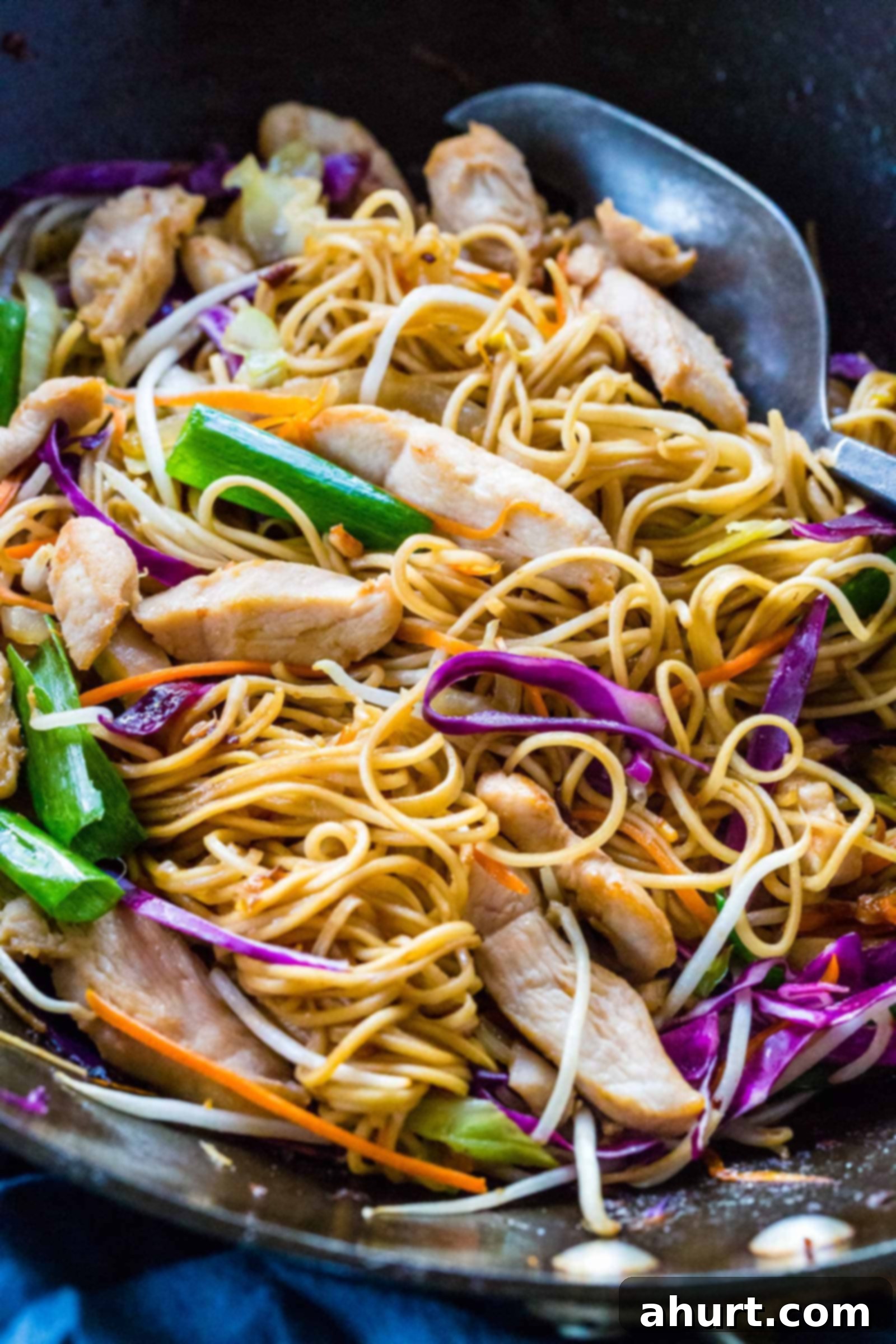Authentic & Easy Chicken Chow Mein: Your Go-To Recipe for Takeout Flavors at Home
Craving the irresistible flavors of your favorite Chinese takeout? Look no further! This easy chicken chow mein recipe brings the authentic taste of crispy noodles, tender chicken, and vibrant vegetables, all coated in a rich, savory sauce, right to your kitchen. Best of all, it’s ready in under 30 minutes, making it the ultimate comfort food for a busy weeknight.
Whether you’re new to the art of stir-frying or simply seeking a quick and delicious dinner solution, this guide to how to make chow mein at home is designed for success. We use fresh, wholesome ingredients to deliver classic flavors that the entire family will adore, proving that homemade can truly be better than takeout.
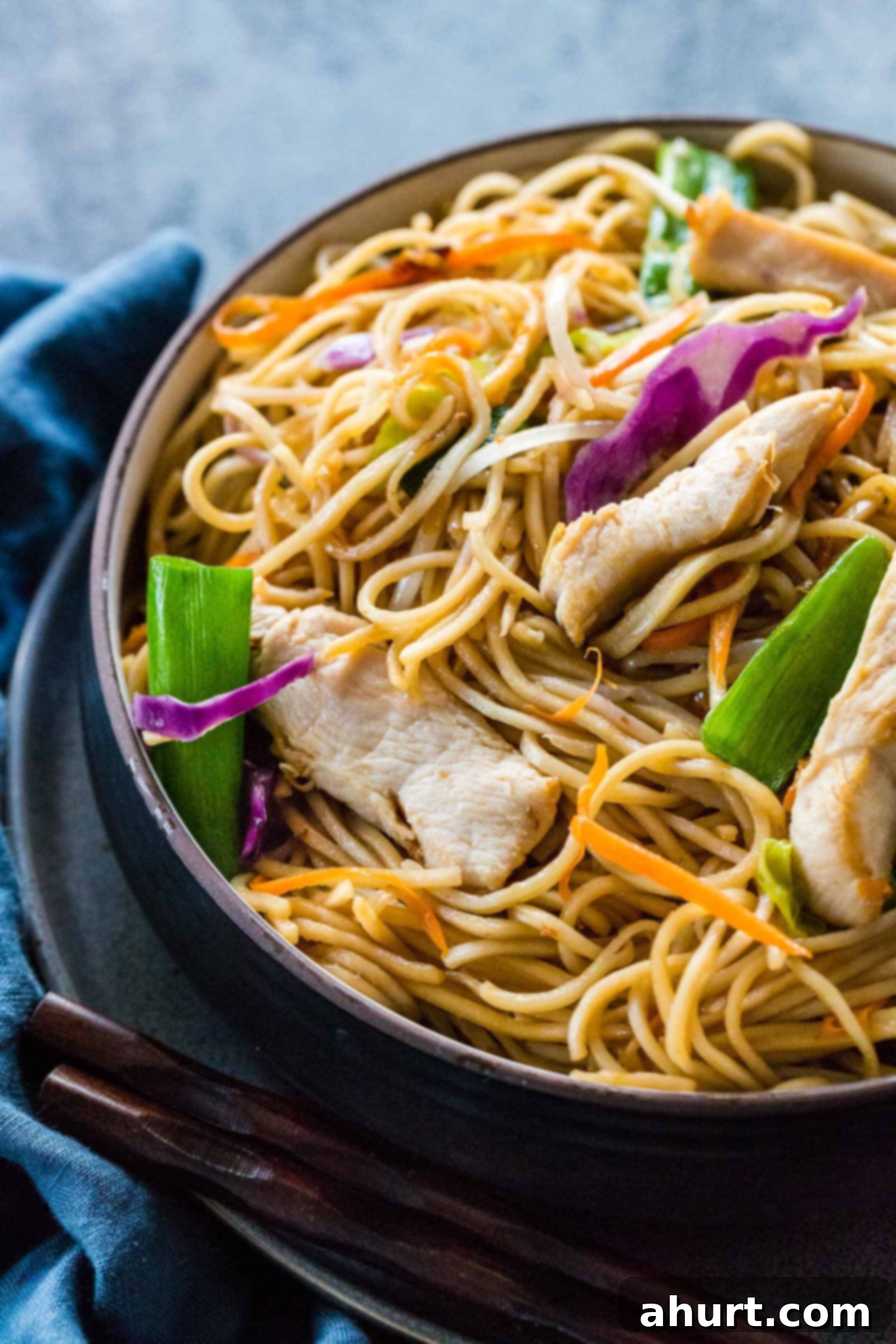
Why This Homemade Chicken Chow Mein Recipe Shines
Our Chicken Chow Mein stands out for its perfect balance of authentic taste and incredible convenience. Forget soggy noodles or bland chicken; this recipe guarantees a dish that bursts with bold, savory flavors in every bite, mirroring the quality you’d expect from your favorite Chinese restaurant, but made with the freshness and control only homemade can offer.
The secret lies in the harmonious combination of lean chicken breast, a medley of crisp, colorful vegetables, and perfectly springy noodles, all brought together by a rich, deeply flavored sauce. What truly sets this chow mein noodles recipe apart is its efficiency. It comes together in just one pan (or wok) and takes less than 30 minutes from start to finish. It’s light yet incredibly satisfying, making it an ideal choice for those busy evenings when you desire a genuinely delicious and wholesome meal without compromising on flavor or quality.
The Benefits of Cooking Chow Mein at Home
- Freshness You Can Taste: You control the quality of every ingredient, ensuring a meal that’s vibrant and full of flavor.
- Quicker Than Delivery: No waiting for the delivery driver! This dish is on your table faster than most takeout orders.
- Healthier Options: Customize the amount of oil and sugar, and load up on fresh vegetables for a more nutritious meal.
- Budget-Friendly: Making chow mein at home is often significantly more economical than ordering from a restaurant.
- Dietary Flexibility: Easily adapt the recipe to be gluten-free, low-sodium, or vegetarian/vegan by making simple substitutions.
Essential Ingredients for Your Perfect Chicken Chow Mein
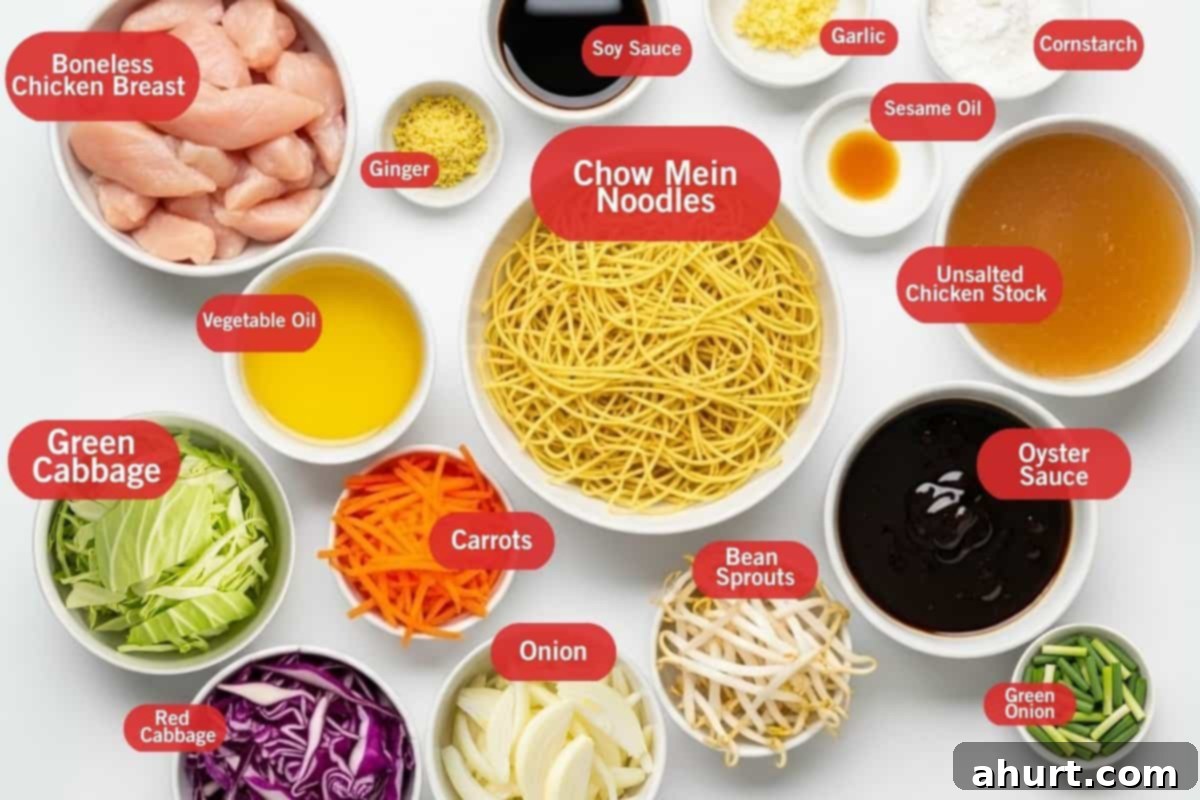
A truly exceptional Chicken Chow Mein begins with high-quality, fresh ingredients that are chosen for their flavor and ability to cook quickly, ensuring optimal texture and taste. Here’s a closer look at what makes this recipe truly shine:
- Chicken Breast: We opt for lean, boneless, skinless chicken breast, cut into thin strips. This allows the chicken to quickly absorb the flavorful marinade, resulting in juicy, tender, and incredibly savory pieces in every mouthful. For an even richer flavor and succulence, chicken thighs can also be used, as they hold up beautifully to stir-frying.
- Chow Mein Noodles: The very essence of this chow mein noodles recipe! Look for fresh or dried chow mein-style egg noodles. Their characteristic springy, chewy texture is crucial for holding the sauce perfectly and providing that satisfying bite. Ensure they are cooked al dente, as they will finish cooking in the wok.
- Colorful Cabbage Mix: A vibrant combination of both green and red cabbage isn’t just for visual appeal. It adds a delightful crunch, a subtle sweetness, and a wealth of essential nutrients. Shredded thinly, they cook quickly and maintain a pleasant, tender-crisp texture.
- The Signature Savory Sauce: This is where the magic happens! Our sauce is a expertly balanced blend of classic Asian staples:
- Soy Sauce: Provides the fundamental umami and salty base. Use low-sodium if preferred.
- Oyster Sauce: Adds a unique sweet, savory, and slightly briny depth that is characteristic of authentic chow mein. For a vegetarian option, mushroom-based oyster sauce substitutes are available.
- Sesame Oil: Contributes a distinct nutty aroma and flavor, typically added at the end for maximum impact.
- Chicken Stock: Thins the sauce and adds a layer of savory richness. Unsalted is best to control overall sodium.
- Cornstarch: Acts as a thickening agent, ensuring the sauce beautifully coats every noodle and piece of chicken and vegetable.
- Fresh Aromatics: Minced garlic and ginger are indispensable for building the aromatic foundation of the dish, infusing the oil with their pungent, warming flavors.
- Additional Vegetables:
- Onion & Carrots: Add a subtle sweetness and additional layers of texture and color.
- Bean Sprouts: A classic chow mein addition, offering a crisp, refreshing bite. Add them towards the end to retain their crunch.
- Green Onions (Scallions): Used as a garnish and for a fresh, mild oniony flavor that brightens the dish.
Note: Please see the detailed recipe card at the bottom for a full list of ingredients with precise measurements.
Step-by-Step Guide: How To Make Chicken Chow Mein at Home
Making delicious chicken chow mein is simpler than you might think. Follow these easy steps for a restaurant-quality meal:
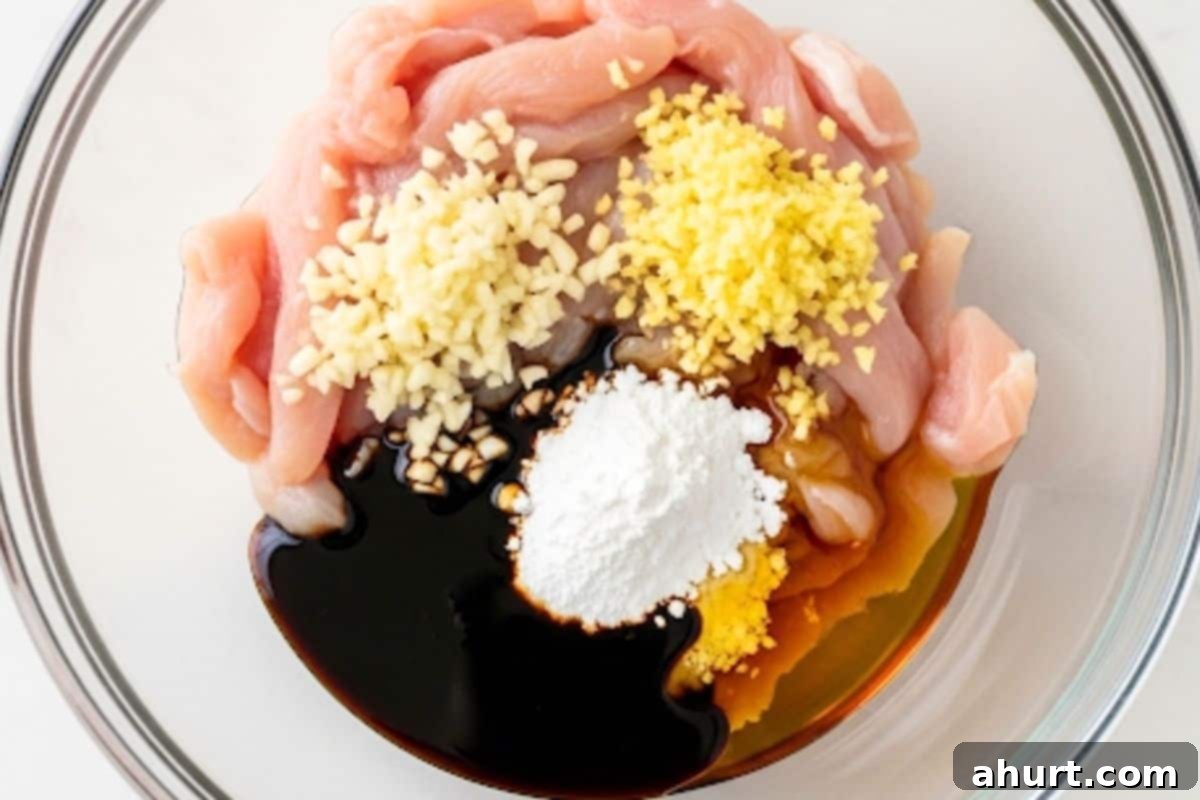
- Marinate the Chicken: In a medium-sized bowl, combine your thinly sliced chicken breast with minced garlic, fresh minced ginger, a touch of soy sauce, cornstarch, and sesame oil. Toss everything gently to ensure the chicken is evenly coated. This quick marinade tenderizes the chicken and infuses it with flavor, preventing it from drying out during cooking. Set it aside while you prepare the other components.
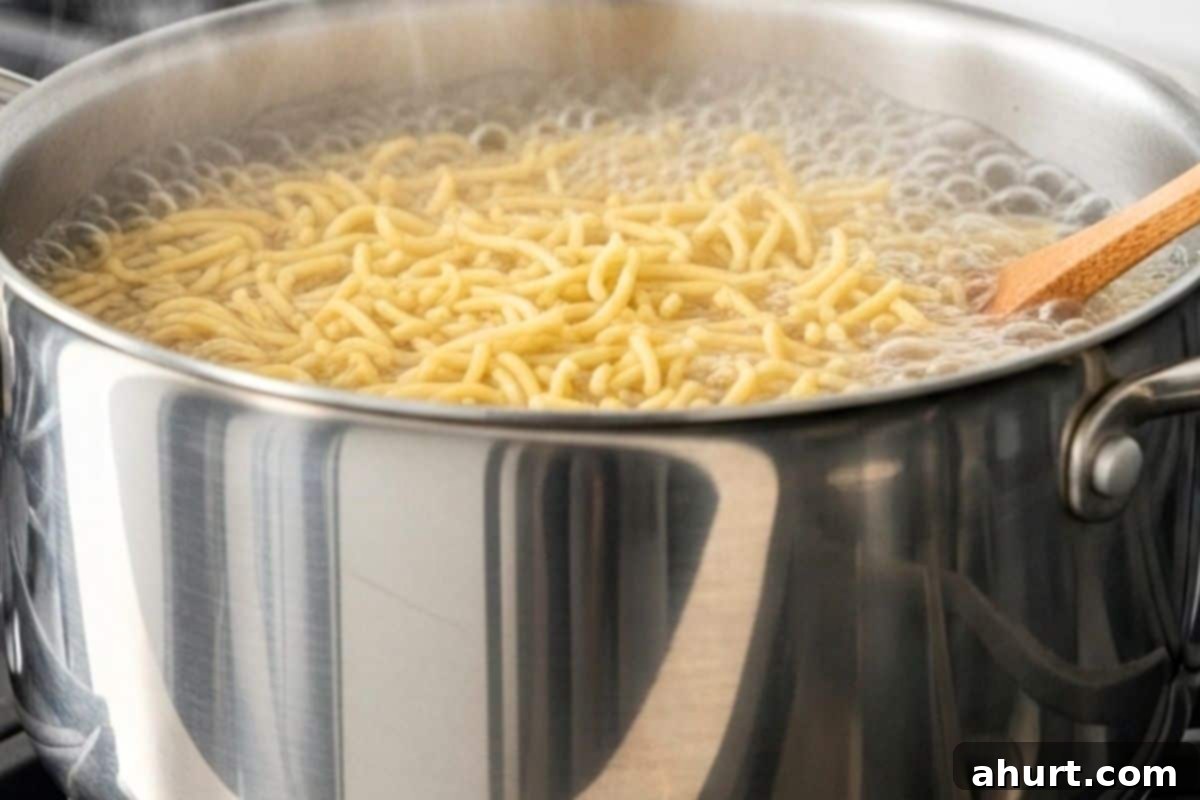
- Cook the Noodles: Bring a pot of salted water to a rolling boil. Add your chow mein noodles and cook them according to the package directions, typically just until al dente. It’s crucial not to overcook them, as they will continue to cook in the wok. Once done, drain them thoroughly and a quick rinse under cold water can prevent them from sticking. Set them aside.
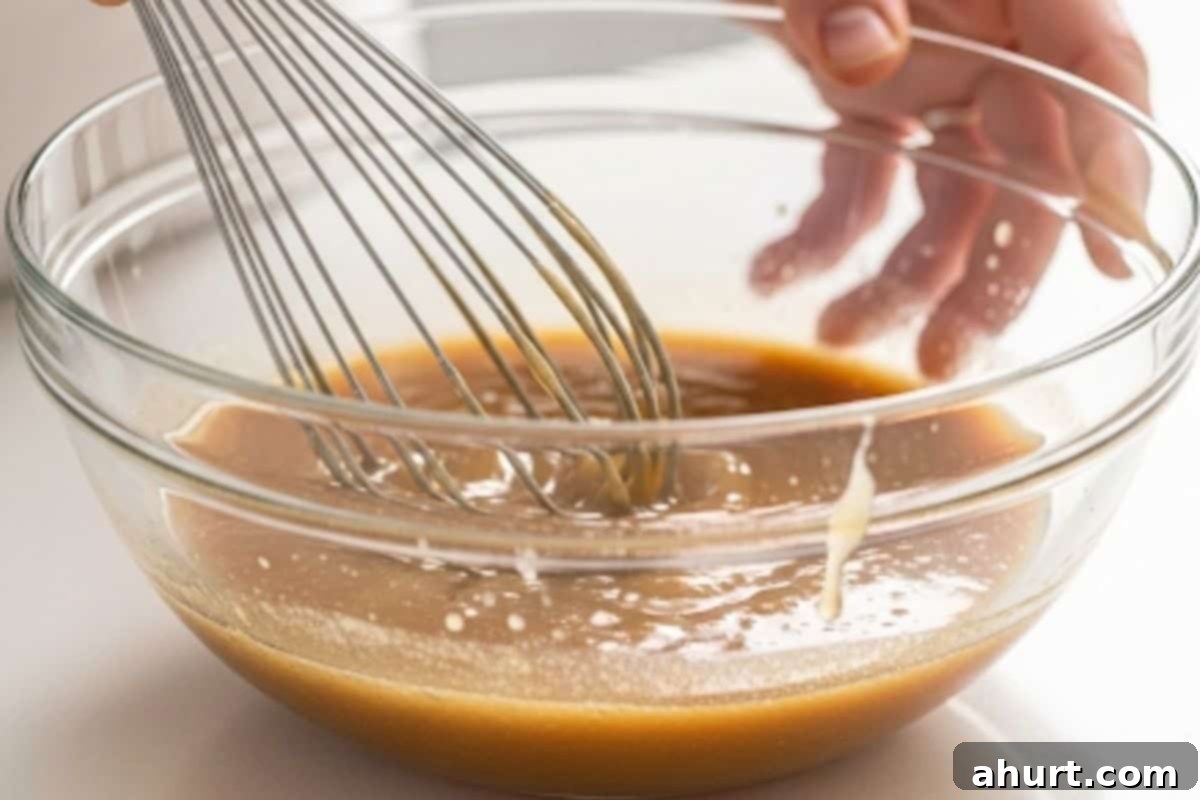
- Prepare the Sauce: In a small bowl, whisk together the unsalted chicken stock, rich oyster sauce, soy sauce, and a teaspoon of cornstarch until the mixture is completely smooth and no lumps remain. This ensures a velvety, well-distributed sauce. Having your sauce ready before you start stir-frying is key to the rapid pace of chow mein cooking.

- Sear the Chicken: Heat a wok or a large, heavy skillet over high heat until it’s smoking slightly. Add a tablespoon of vegetable oil. Once the oil is shimmering, add the marinated chicken in a single layer. Stir-fry for about 3 minutes, or until the chicken is lightly browned and cooked through. Avoid overcrowding the pan, as this can steam the chicken instead of searing it. Transfer the cooked chicken to a clean plate and set aside.
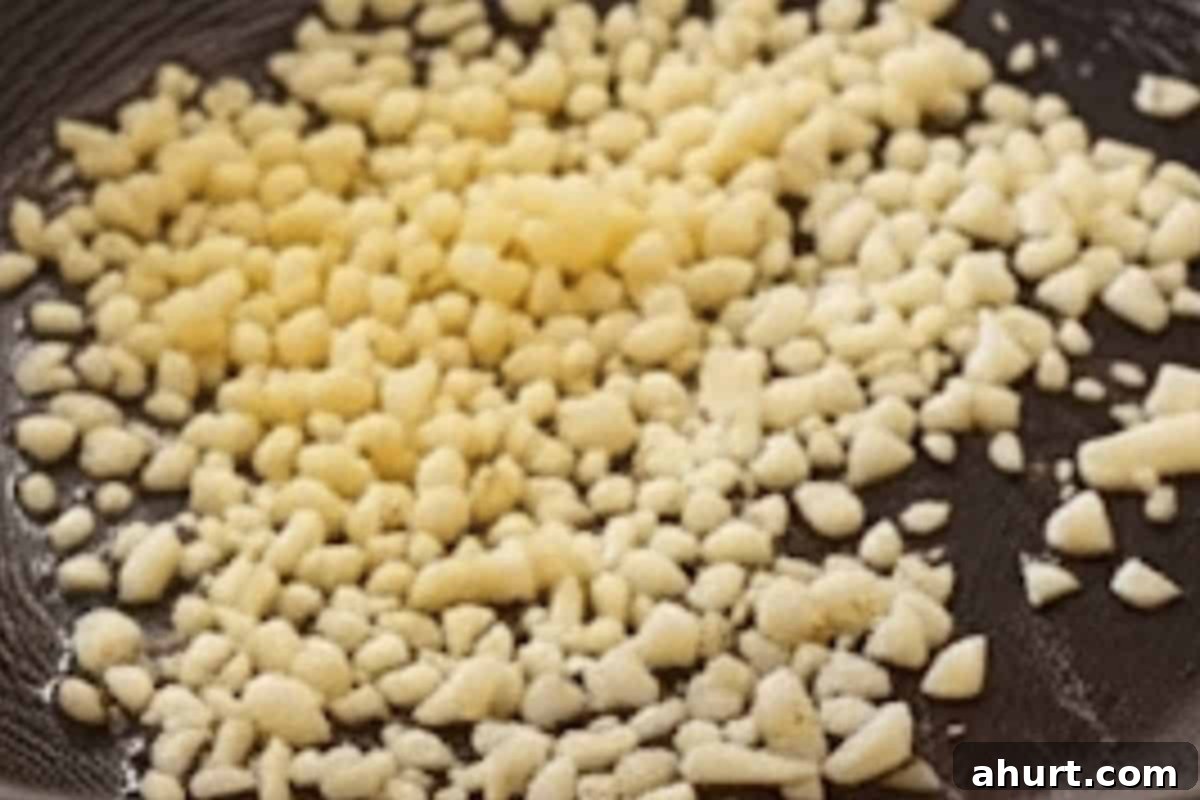
- Sauté Aromatics: Return the wok to high heat (if needed, add another splash of oil). Add the remaining minced garlic and ginger. Stir-fry vigorously for just 15 seconds until they become wonderfully fragrant but not browned or burnt. This quick sauté releases their intense flavors into the oil.
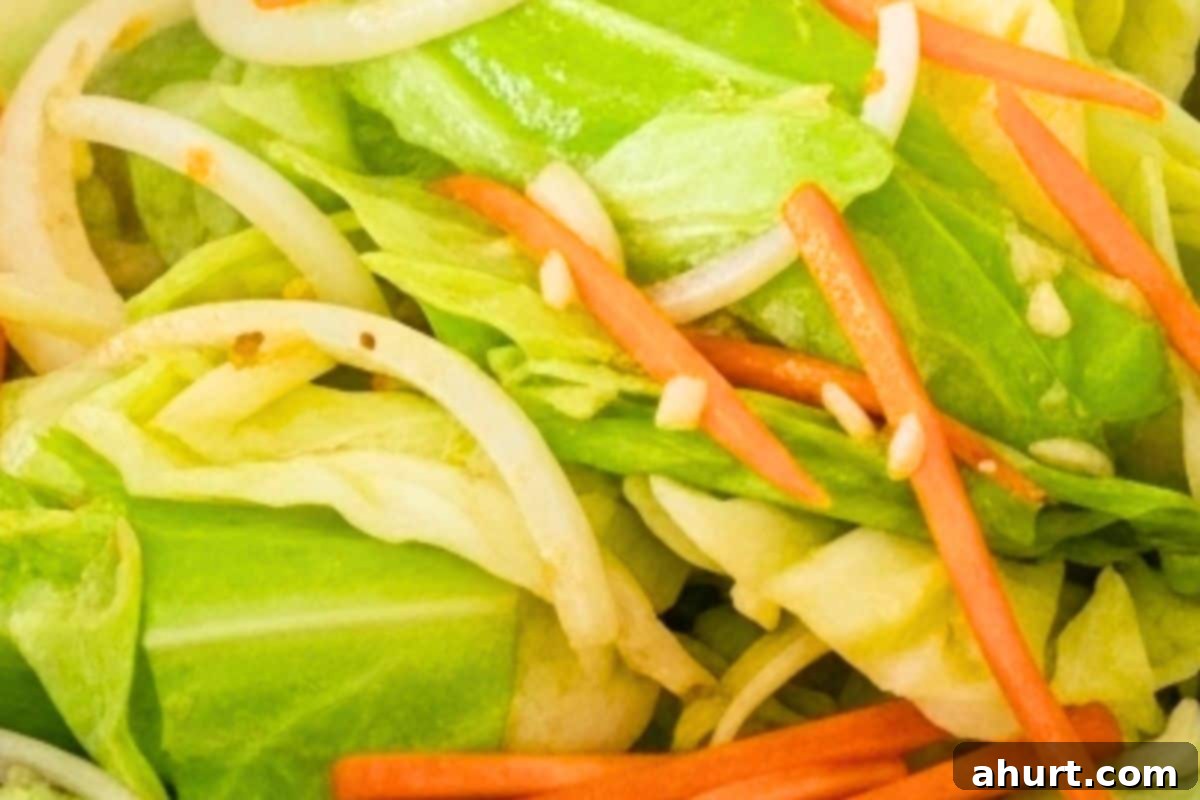
- Cook the Vegetables: Add the green cabbage, thinly sliced onion, and carrots to the wok. Stir-fry for about 2 minutes, continuously tossing, until the vegetables are tender-crisp. You want them to retain a slight bite for texture.
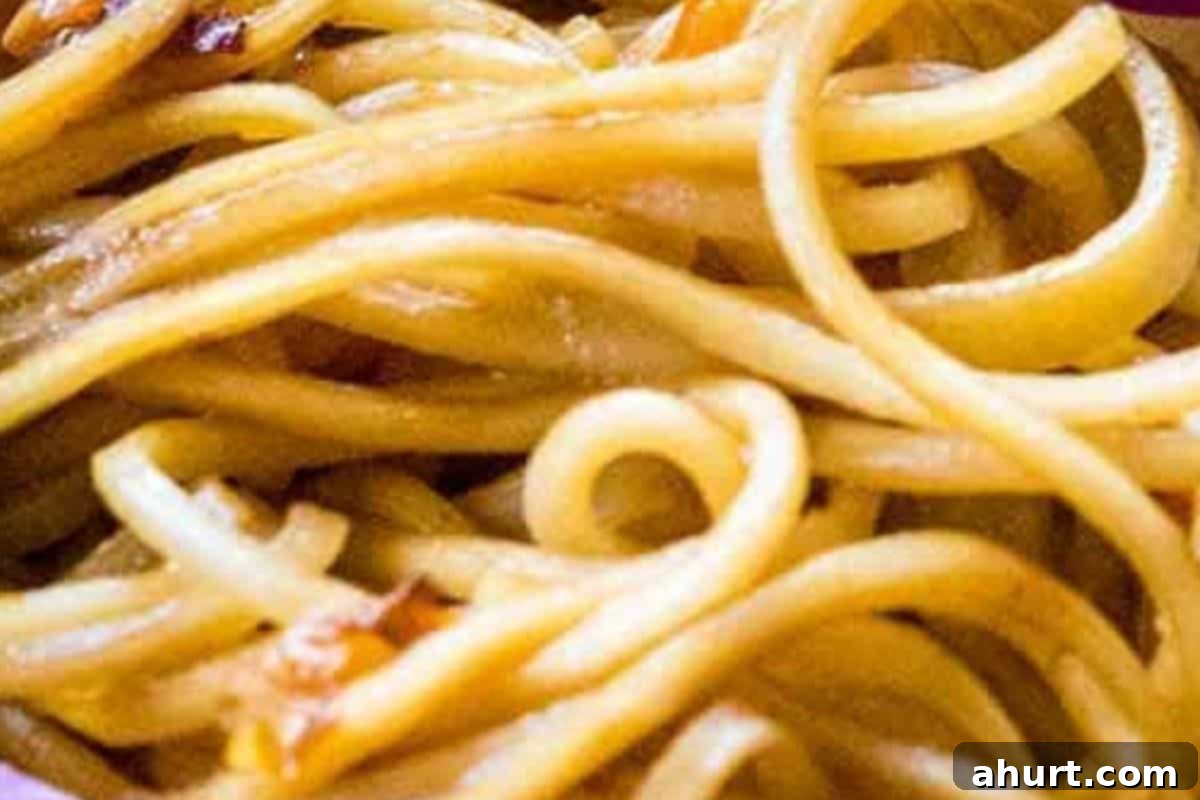
- Combine with Noodles and Sauce: Add the pre-cooked chow mein noodles and the whisked sauce to the wok. Toss everything together for about 1 minute, ensuring the noodles are fully coated and the sauce thickens to a glossy consistency. This is where the magic of chow mein comes alive!
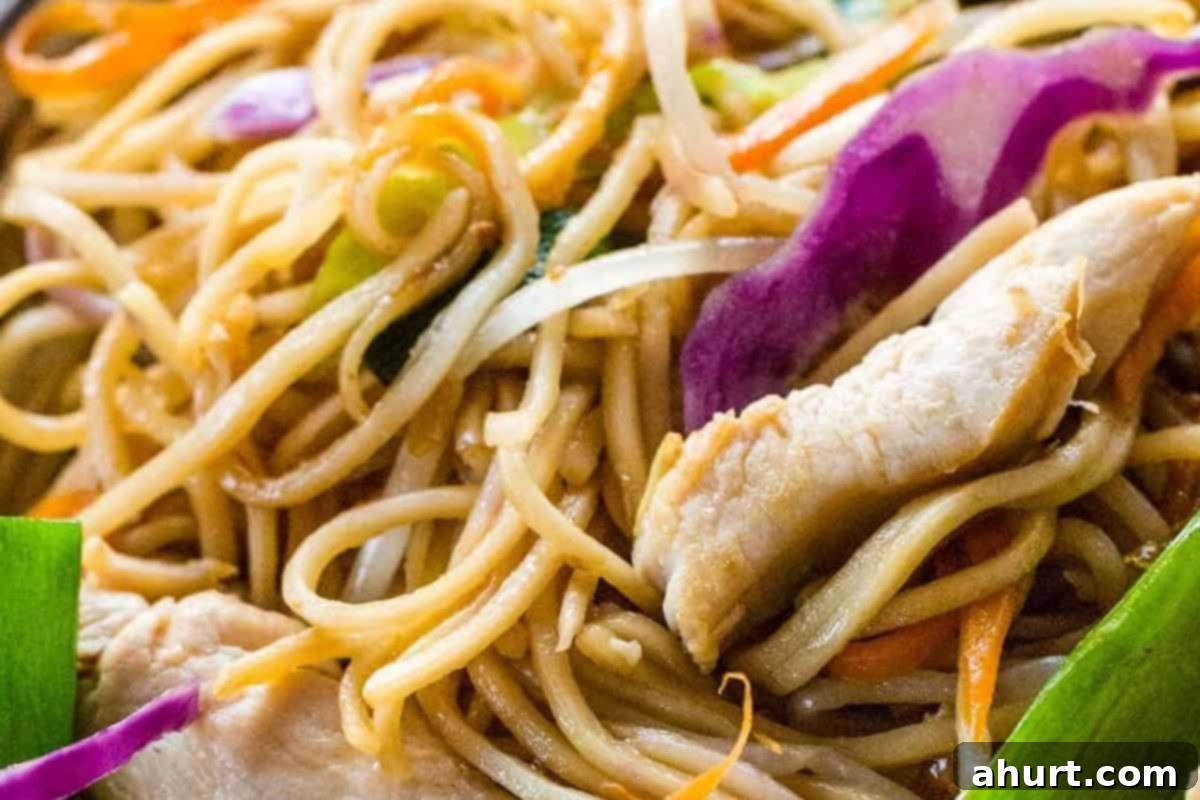
- Finish and Serve: Finally, add the red cabbage, crisp bean sprouts, and chopped green onions. Return the seared chicken to the wok. Toss everything together for just 1 minute to warm through and ensure all ingredients are well combined. Serve your delicious homemade chicken chow mein immediately while hot and fresh!
Pro Tips for the Best Homemade Chow Mein
- Mise en Place is Key: “Everything in its place” – have all your ingredients prepped, chopped, and measured before you start cooking. Stir-frying is a fast process, and you won’t have time to chop mid-cook.
- High Heat is Essential: Use a wok or a large, heavy-bottomed skillet over high heat. This ensures proper stir-frying, creating that desirable “wok hei” (breath of the wok) flavor and preventing ingredients from steaming.
- Don’t Overcrowd the Wok: Cook the chicken in batches if necessary to ensure it sears and browns properly. Overcrowding cools the pan and leads to steamed, rather than stir-fried, ingredients.
- Perfectly Cooked Noodles: Boil your noodles until they are just al dente. They will absorb more sauce and finish cooking in the wok, so you want them slightly firm initially.
- Continuous Stirring: Keep everything moving in the wok to ensure even cooking and coating with the sauce. This prevents sticking and burning.
- Adjust Seasoning to Taste: Taste the sauce before adding it to the noodles. You can always add a splash more soy sauce or a pinch of sugar if needed to balance the flavors.
Variations and Customizations for Your Chow Mein
This easy chicken chow mein recipe is incredibly versatile. Feel free to experiment and make it your own!
- Other Proteins:
- Beef Chow Mein: Use thinly sliced sirloin or flank steak.
- Shrimp Chow Mein: Add peeled and deveined shrimp, cooking them briefly until pink.
- Pork Chow Mein: Thinly sliced pork tenderloin or pork shoulder works wonderfully.
- Tofu/Vegetarian Chow Mein: Press extra-firm tofu, cut into cubes, and pan-fry until golden. Use vegetarian oyster sauce.
- Add More Vegetables: Enhance the nutritional value and texture with additions like bell peppers (sliced), snow peas, broccoli florets, sliced mushrooms, baby bok choy, or water chestnuts. Add harder vegetables earlier and softer ones later to ensure everything is tender-crisp.
- Spice it Up: For a kick, add a dash of sriracha, a teaspoon of chili garlic sauce, or some dried red chili flakes to the sauce or while stir-frying the aromatics.
- Gluten-Free Option: Simply use tamari or a gluten-free soy sauce alternative, and ensure your chow mein noodles are gluten-free (often rice noodles or specific GF brands).
- Nutty Flavor: A sprinkle of toasted sesame seeds or chopped peanuts at the end can add an extra layer of texture and flavor.
Pair this Chicken Chow Mein with sides that complement its bold, savory flavors for a complete meal. Try Garlic Browned Butter Baked Asparagus for a crisp, buttery bite, Crispy Broccoli Parmesan Fritters for a fun, cheesy crunch, or Beef Stuffed Eggplants for a hearty, flavor-packed addition to the table. For a lighter approach, a simple cucumber salad or some steamed edamame would also be excellent choices.
Recipe FAQs: Your Chicken Chow Mein Questions Answered
Yes, absolutely! Chicken thighs are an excellent alternative. They stay extra juicy and tender, making them a fantastic choice for an even richer and more succulent easy chicken chow mein. Just ensure they are cut into similar thin slices for even cooking.
The primary difference lies in the way the noodles are prepared and incorporated. Chow mein noodles recipes traditionally feature noodles that are stir-fried, often until they develop a slightly crisp or chewy texture. Lo mein, on the other hand, typically uses soft, boiled noodles that are tossed with the sauce and other ingredients rather than extensively stir-fried, resulting in a softer noodle dish.
Absolutely! While a wok is ideal for stir-frying due to its shape and ability to retain high heat, a large, heavy-bottomed skillet or a cast-iron pan will work very well. The key is to use high heat and avoid overcrowding the pan to ensure your ingredients stir-fry rather than steam when learning how to make chow mein at home.
Store any leftover chow mein in an airtight container in the refrigerator for up to 3-4 days. For best results, allow it to cool completely before refrigerating.
To reheat, you can use a microwave, but for the best texture, reheat in a skillet or wok over medium-high heat with a tiny splash of water or broth. Stir-fry for a few minutes until heated through, which will help revive the noodles and vegetables.
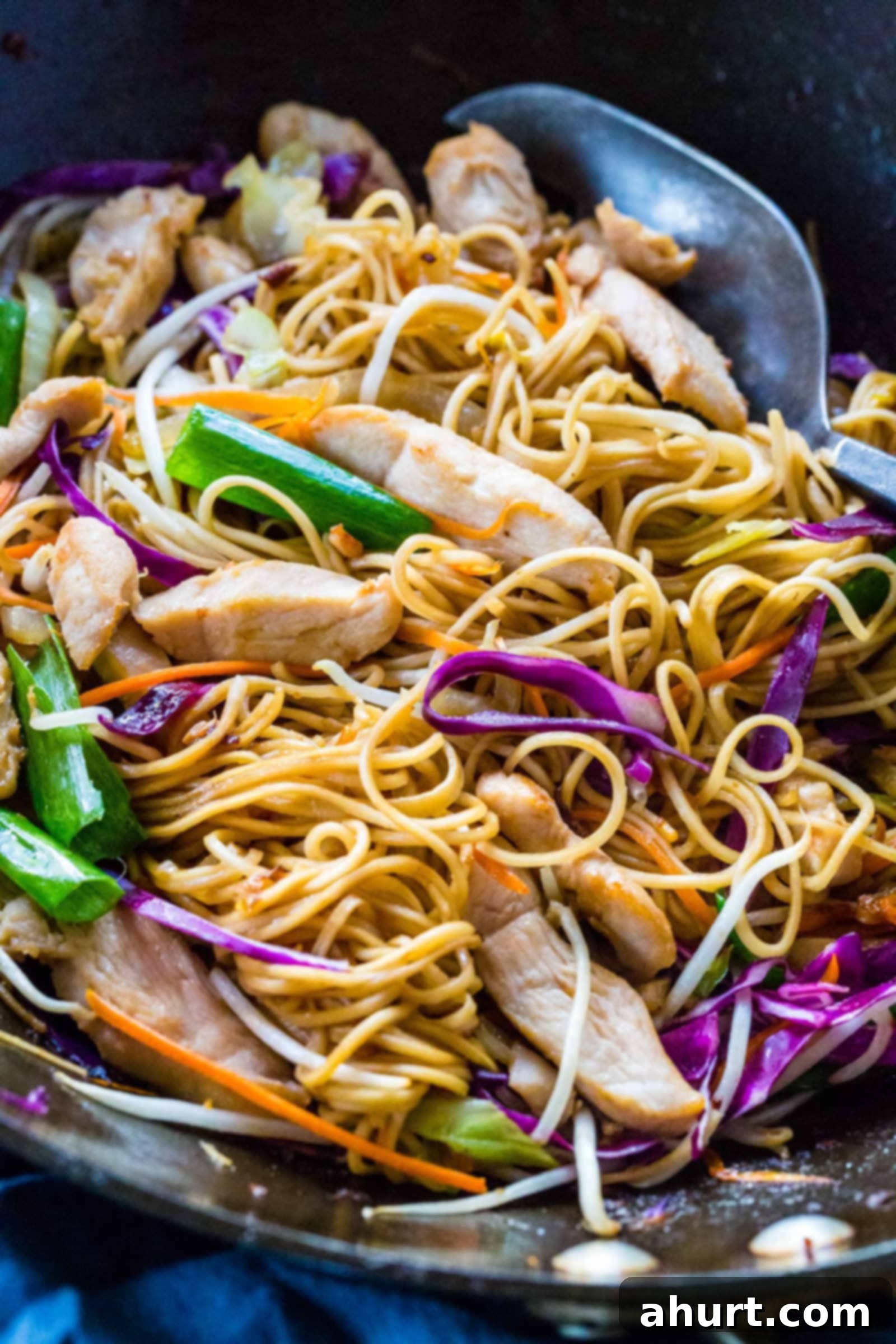
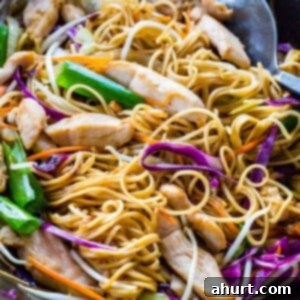
Pin
Chicken Chow Mein
Ingredients
Chicken-
- 8 ounces boneless skinless chicken breast cut into ½-inch thick slices
- 1 teaspoon garlic minced
- 1 teaspoon ginger minced
- 1 teaspoon soy sauce
- ½ teaspoon cornstarch
- ½ teaspoon sesame oil
- 1 tablespoon vegetable oil
Chow Mein-
- 6 ounces dried chow mein noodles
- ¼ cup unsalted chicken stock
- 3 tablespoons oyster sauce
- 1 tablespoon soy sauce
- 1 teaspoon cornstarch
- 1 tablespoon vegetable oil
- 1 teaspoon garlic minced
- 1 teaspoon ginger minced
- 1 cup green cabbage ¼-inch thick slices
- ½ cup yellow onion ¼-inch thick slices
- ¼ cup carrots ⅛-inch slices
- 1 cup red cabbage ¼-inch thick slices
- 1 cup bean sprouts
- ¼ cup green onion 1 1/2 -inch long pieces
Instructions
Chicken
-
In a medium-sized bowl combine sliced chicken, garlic, ginger, soy sauce, cornstarch, and sesame oil.
-
Heat a wok or large saute pan over medium-high heat.
-
Add the oil, once hot add the chicken.
-
Stir-fry the chicken until lightly browned and cooked through, about 3 minutes.
-
Transfer chicken to a clean plate and reserve.
Chow Mein
-
Cook the chow mein noodles according to manufacturer’s direction.
-
Drain and reserve the noodles.
-
In a small bowl whisk together the chicken stock, soy sauce, and cornstarch. Set aside.
-
Heat the wok over high heat.
-
Add the oil, then once hot add the garlic and ginger. Saute for 15 seconds until fragrant but not browned.
-
Add the green cabbage, onion and carrots, stir-fry until tender, about 2 minutes.
-
Add the cooked noodles and sauce. Stir to combine and cook until the sauce has thickened, about 1 minute.
-
Add the purple cabbage, bean sprouts, and green onions, stir-fry until just tender, 1 minute.
-
Add the chicken back to the wok, stir to combine until warm.
-
Serve chicken chow mein immediately.
Notes
Nutrition
Nutrition information is automatically calculated, so should only be used as an approximation.
